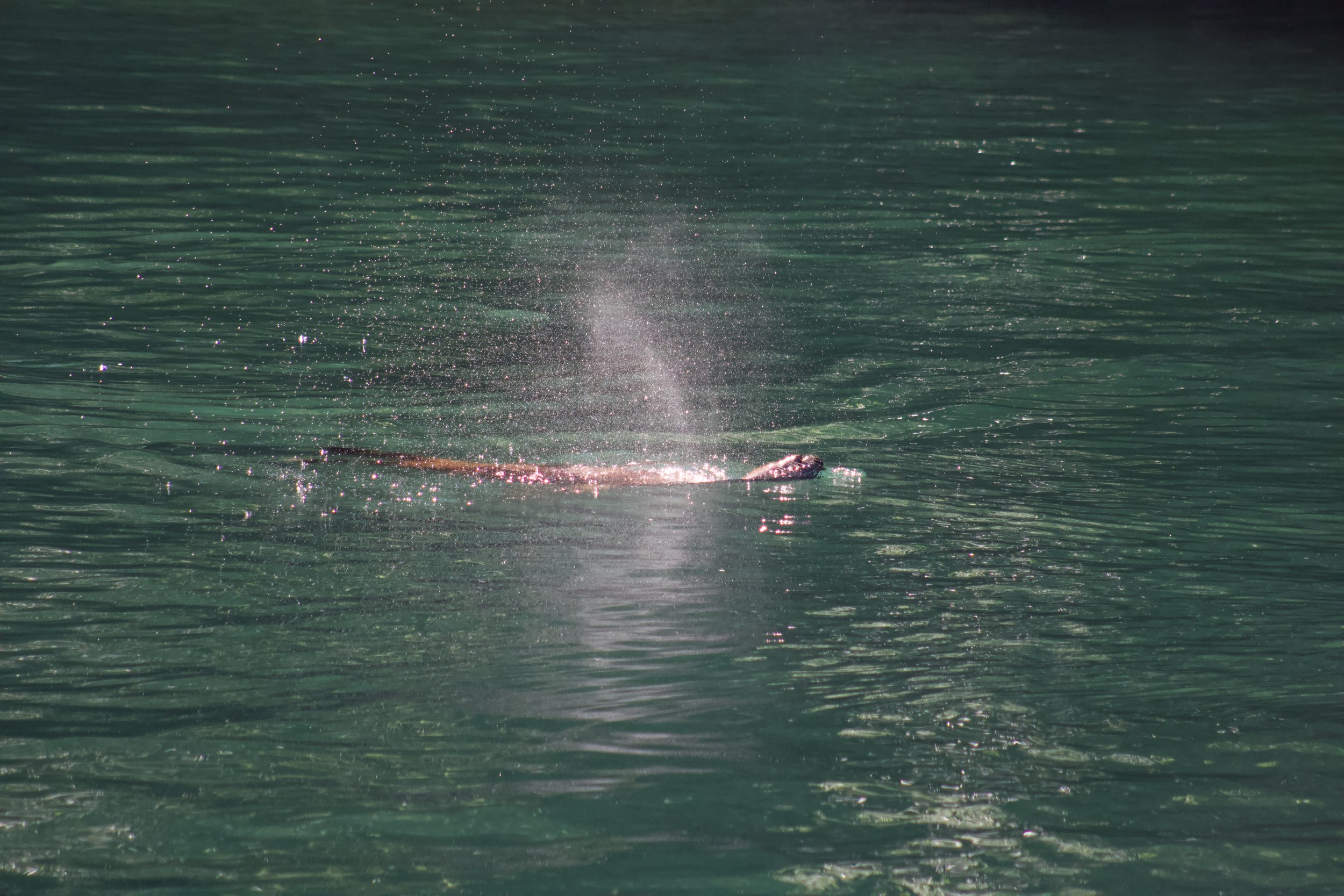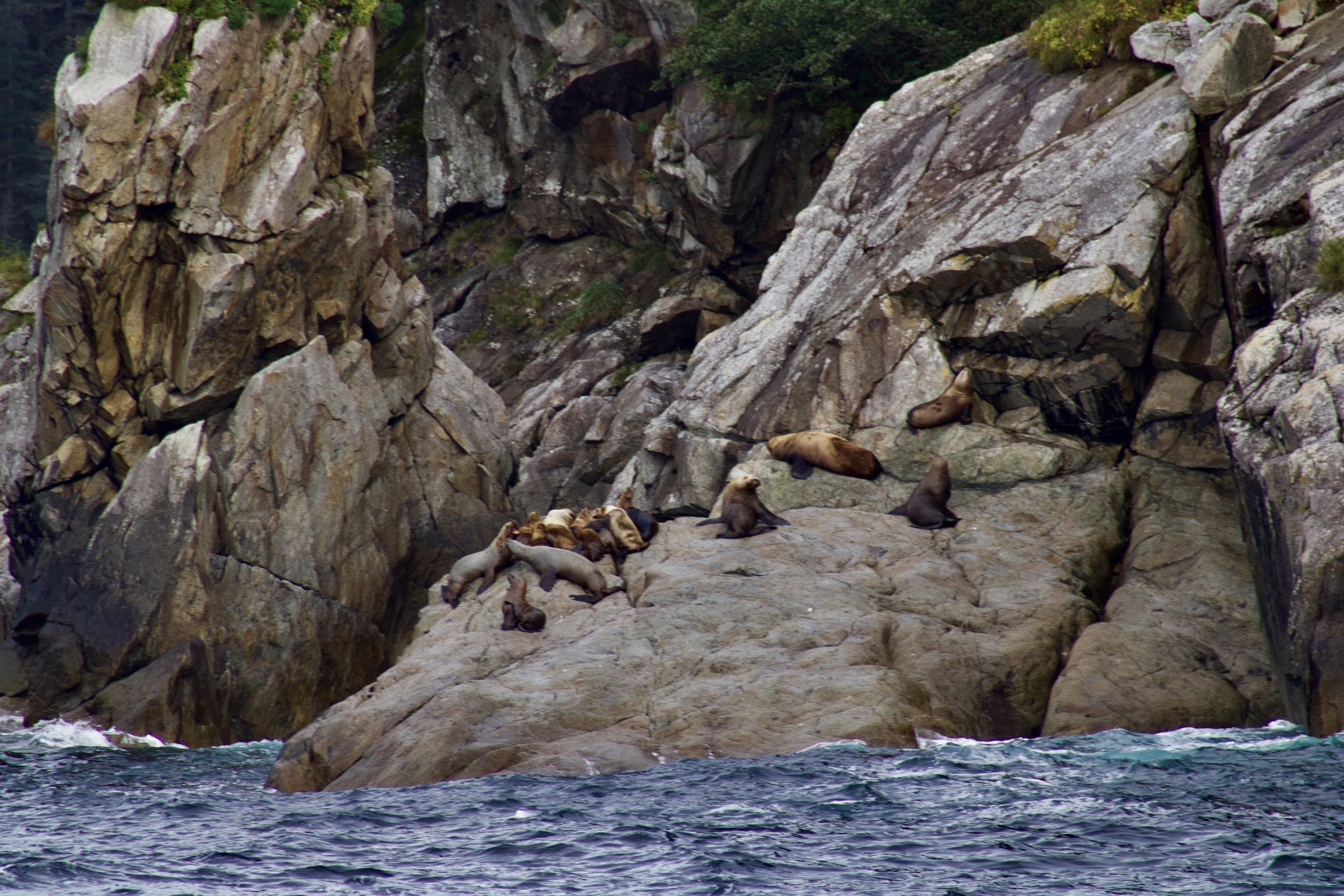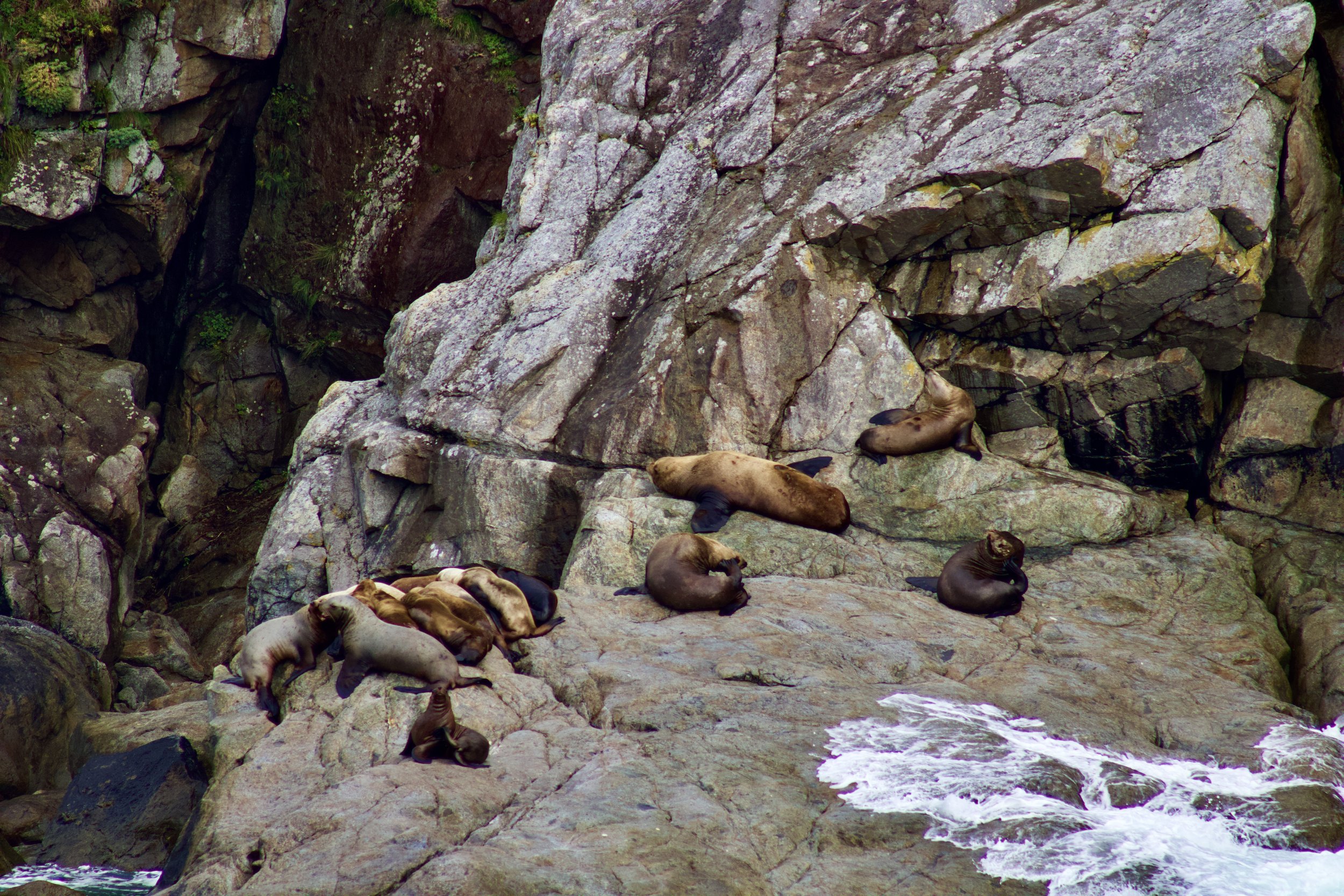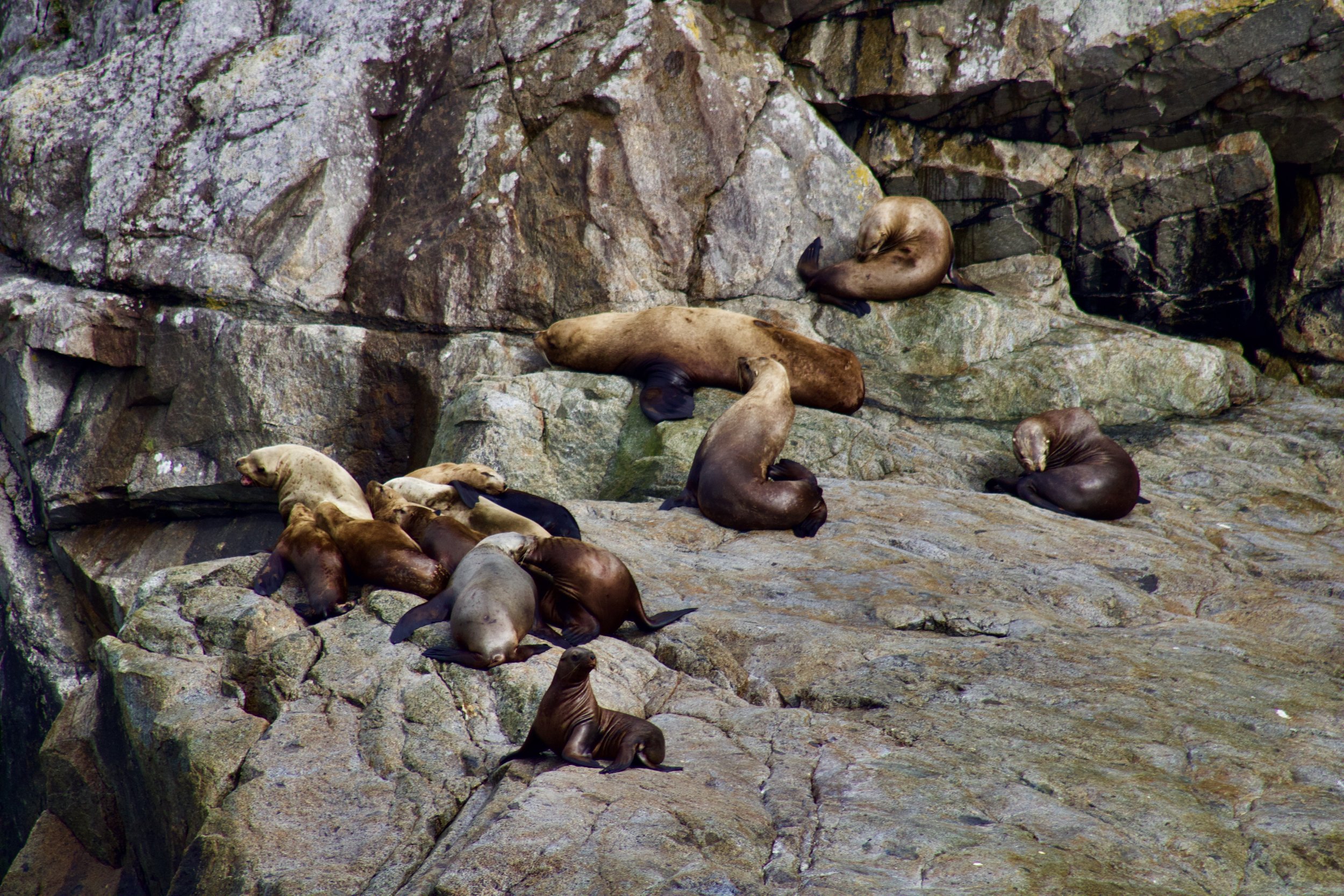Seward Marine Tour Part 2- The Wildlife
A look at the wildlife of Resurrection Bay outside of Seward, Alaska.
These cliffs make a great place for birds to nest. These birds are primarily Black-legged Kittiwakes. If you look closely, you can see the steller sea lions resting out of the waves. I have been living and working in Alaska now for over a month. This has been one of my favorite places to be thus far. There is so much more to explore! I am excited to see what the rest of my time here has in store for me. Last week, I talked about the landscape I saw when my siblings, husband, and I went on a marine wildlife and glacier tour with Major Marine Tours out of Seward, Alaska. If you have not read that post, you can do so by clicking here. This is not a requirement, but if you don’t read it, you will have missed out on half of this amazing adventure. Luckily, we took our tour on what the crew said was one of the best days they had had in the past few weeks. I have to agree; you couldn’t have written a prescription for a better fall day.





Immediately upon leaving the port, we didn’t see very much wildlife. As the tour progressed, we couldn’t stop seeing animals. As we passed the beautiful teal colored waters of Thumb Cove, we saw a Steller Sea Lion playing in the waves. He was splashing and diving so quickly, it was hard to get a good picture of him. This lone sea lion wasn’t the only one we saw as there was a large group of them lounging on the far side of Hive Island. The sheer cliffs of this particular island makes it a great spot for birds to nest and for the sea lions to rest out of the waves. In the pictures above, you can see what a great spot it is to soak up some sun as Black-Legged Kittiwakes glide on the updrafts created by the ocean breeze.
A group of otters is know as a raft when they are in the water. This particular raft of otters was a little skittish as the boat got close.Our next wildlife sighting was a group of sea otters floating on their back in Aialik Bay. These otters were a little skittish, so we weren’t able to get really close to them. However, the tour guide assured us there would be a spot later in the tour where the otters are more used to seeing the boats and we might be able to get some good close ups there. Personally, I don’t know how the otters can float on their backs at the surface of the bay. I would be terrified of what could possibly be lurking below the surface (cue the Jaws music).
It was hard to get close to this herd of harbor seals because they were so close to the glacier. Luckily, they were just hanging out on the iceberg instead of splashing in the water.Right at the base of Holgate Glacier, a group of harbor seals was laying out of an iceberg that had broken off the glacier. For safety reasons, we weren’t able to get super close to them. However, seeing their spotted bodies lounging on the pretty blue ice was an unexpected treat. According to our tour guide, Harbor Seals can grow up to 5 feet in length and weigh up to 250 pounds.




On our way back to Resurrection Bay, the crew spotted some fin whales. We slowed down as we approached where they had been surfacing so as to not disturb them. In front of us appeared to be two whales, a larger and a smaller which were most likely mother and baby. They surfaced several times, allowing us to catch a glimpse of the signature fin near their tails. Fin whales are baleen whales, meaning they have large plate like structures in their mouths that filter out small fish and krill from the sea water. According to the tour guide, fin whales are the second largest whale. The largest species of whale is the blue whale.





As we were passing by Cheval Island, we saw another group of Steller Sea Lions. The ship was able to get a little closer to this group, so I got some great close ups of them. As we were leaving, some Horned Puffins flew by and landed in a large group. These birds are much smaller than you would think, so it was hard to get a good picture of them with my camera. The puffin you see without the signature yellow and orange on their beak is a younger puffin. They don’t get the yellow and orange until they mature into adults.




The last marine animal we come upon was another group of sea otters. This small group consisted of three otters, a pup, its mother, and another otter. As promised, these otters were more used to having the ship close, so we were able to float right up to them. It was interesting to see the pup nursing. Sea otters have the densest fur of any mammal, this helps them stay warm in the cold waters of the bay. We stayed close to this group for a while so that everyone was able to get a good look at them.
The marine wildlife and glacier tour we took with Major Marine Tours out of Seward, Alaska is an absolute must. We spent 6 hours out in the bay enjoying some of the unique features Alaska has to offer. If you want to take the same tour that we took, you can go to Major Marine Tours’ website here. This post is not sponsored in any way. This is honestly one of my favorite activities we have done thus far. I highly recommend adding a wildlife tour like this to your itinerary.
Happy Traveling!
Kat



